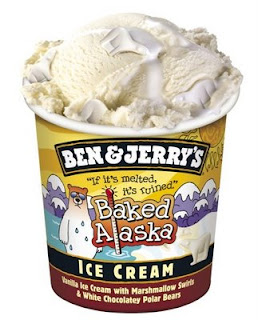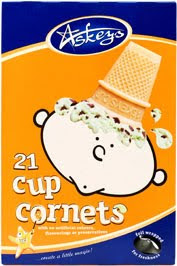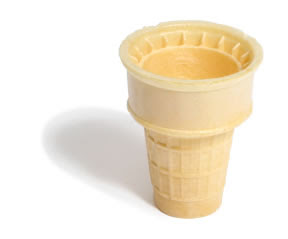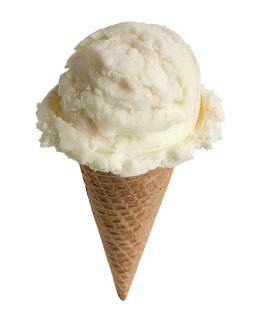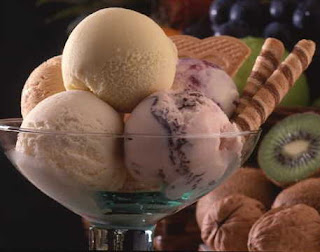Top 15 flavors of ice cream
1. Vanilla, 29%
2. Chocolate, 8.9%
3. Butter pecan, 5.3%
4. Strawberry, 5.3%
5. Neapolitan, 4.2%
6. Chocolate chip, 3.9%
7. French vanilla, 3.8%
8. Cookies and cream, 3.6%
9. Vanilla fudge ripple, 2.6%
10. Praline pecan, 1.7%
11. Cherry, 1.6%
12. Chocolate almond, 1.6%
13. Coffee, 1.6%
14. Rocky road, 1.5%
15. Chocolate marshmallow, 1.3%
All others, 23.7%
source: Source: International Ice Cream Association, 888 16th St., Washington, D.C., 20006.
List
- Almond Coconut Ice Cream
- Almond Ice Cream
- Apple Butter Ice Cream
- Apple Sauce Ice Cream
- Apple Walnut Ice Cream
- Avacado Ice Cream
- B&J Sweet Cream Base
- Banana Ice Cream
- Banana Chocolate Chip Ice Cream
- Banana with Walnut and Chocolate Pieces Ice Cream
- Banana Fluffy Ice Cream
- Banana Peach Ice Cream
- Banana Peanut Butter Ice Cream
- Banana Walnut Ice Cream
- Banoffee Ice Cream
- Blackberry Ice Cream
- Blueberry Ice Cream
- Blueberry Sorbet
- Blueberry Sour Milk Ice Cream
- Brown Sugar Ice Cream
- Butter Pecan Ice Cream
- Buttermilk Fudge Ice Cream
- Butterscotch-Peanut Butter Ice Cream
- Cactus Fruit Sorbet
- Cantalope Ice Cream
- Carrot Ice Cream
- Cherry Ice Cream
- Cherry Sorbet
- Cherry-Cherry Garcia Ice Cream
- Chocolate Almond Butter Ice Cream
- Chocolate Almond Ice Cream
- Chocolate Almond Chocolate Chip Ice Cream
- Chocolate Almond White Chocolate Chip Ice Cream
- Chocolate Banana Ice Cream
- Chocolate Banana Hazelnut Ice Cream
- Chocolate Cashew Butter Ice Cream
- Chocolate Cherry Ice Cream
- Chocolate Chip Cookie Ice Cream
- Chocolate Chip Ice Cream
- Chocolate Chocolate Chip Ice Cream
- Chocolate Chocolate Truffle Ice Cream
- Chocolate Cinnamon Ice Cream
- Chocolate Cinnamon Banana Ice Cream
- Chocolate Coconut Ice Cream
- Chocolate Frozen Yogurt
- Chocolate Hazelnut Ice Cream
- Chocolate Hazelnut (Nutella) Ice Cream
- Chocolate Ice Cream
- Choclate Ice Cream with Geno's Ice Cream mix
- Chocolate Macadamia Nut Ice Cream
- Chocolate Maple Ice Cream
- Chocolate Marshmellow Ice Cream
- Chocolate Parfait
- Chocolate Peanut Butter Ice Cream
- Chocolate Peanut Butter Chip Ice Cream
- Chocolate Peanut Butter with Rieces Peanut Butter Cup Chunks
- Chocolate Peanut Butter Cup Ice Cream
- Chocolate Pecan Ice Cream
- Chocolate Raspberry Ice Cream
- Chocolate Rice Krispies Ice Cream
- Chocolate Strawberry Ice Cream
- Chocolate Truffle Ice Cream
- Chocolate Walnut Ice Cream
- Chocolate-white chocolate chip Ice Cream
- Chocolate/Fudge Ice Cream
- Cinnamon Ice Cream
- Cinnamon Banana Ice Cream
- Cinnamon Banana Walnut Ice Cream
- Cinnamon Walnut Ice Cream
- Coca-Cola Ice Cream
- Coconut Ice Cream
- Coconut Almond Ice Cream
- Coconut Pineapple Ice Cream
- Cranberry Ice
- Cranberry Ice Cream
- Cream Corn Ice Cream
- Elderberry Ice Cream
- Fudgeeo Cookie Ice Cream
- Garlic Ice Cream
- Ginger Ice Cream
- Grape Ice Cream
- Grapefruit Ice Craem
- Heath Bar Crunch Ice Cream
- Honey Almond Ice Cream
- Honey Apple Cinnamon Raisin Walnut Ice Cream
- Honey Cinnamon Cloves Ice Cream
- Honey Ice Cream
- Key Lime Ice Cream
- Kiwi Fruit Ice Cream
- Kulfi
- Lemon Ice Cream
- Lemon Pistacio Ice Cream
- Lemon Sorbet
- Lime Ice Cream
- Macadamia Nut Ice Cream
- Mandarin Chocolate Ice Cream
- Mango Ice Cream
- Mango Sorbet
- Maple Almond Ice Cream
- Maple Banana Walnut Ice Cream
- Maple Blueberry Ice Cream
- Maple Blueberry Sorbet
- Maple Ice Cream
- Maple Parfait
- Maple Peanut Butter Ice Cream
- Maple Strawberry Ice Cream
- Maple Strawberry Sorbet
- Maple Walnut Ice Cream
- Maple Walnut Soy Milk Ice Cream
- Marshmellow Vanilla Ice Cream
- Mexican Chocolate Ice Cream
- New York Super Fudge Chunk Ice Cream
- Nutmeg Ice Cream
- Oatmeal Ice Cream
- Orange Ice Cream
- Orange Marmalade Ice Cream
- Orange Sherbert
- Oreo Cookie Chocolate Ice Cream
- Oreo Cookie Ice Cream
- Oreo Cookie Mandarin Chocolate Ice Cream
- Pear-Walnut Ice Cream
- Peach Ice Cream
- Peach Sorbet
- Peanut Butter Chip Ice Cream
- Peanut Butter Chocolate Chip Ice Cream
- Persimmon Ice Cream
- Philadephia Blue Ice Cream - Pineapple Banana Ice Cream
- Pineapple Ice Cream
- Pistacio Ice Cream
- Praline Pecan Ice Cream
- Plum Ice Cream
- Pomelo Ice Cream
- Pumpkin Ice Cream
- Raspberry Ice Cream
- Rocky Road Ice Cream
- Root Beer Ice Cream
- Rose Ice Cream
- Rhubarb Ice Cream
- Sesame Ice Cream
- Skor Ice Cream
- Strawberry Ice Cream
- Strawberry Sorbet
- Strawberry-Banana Sorbet
- Strawberry-Banana Ice Cream
- Strawberry-Watermelon Ice
- Vanilla Brownie Ice Cream
- Vanilla Chocolate Cookie Ice Cream
- Vanilla Ice Cream
- White Chocolate Ice Cream
- White Chocolate Liquor Ice Cream
- Wild Blueberry Ice Cream
source : http://www.cgl.uwaterloo.ca/~smann/IceCream/flavors.txt




